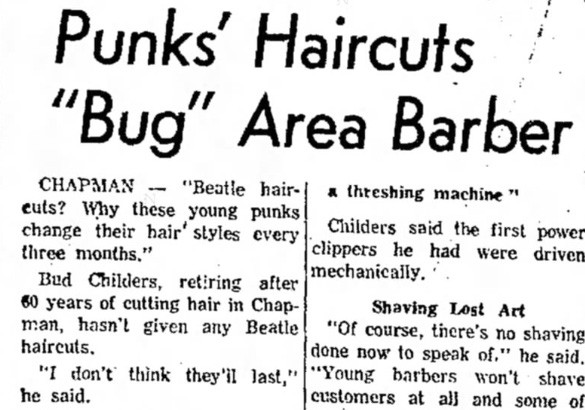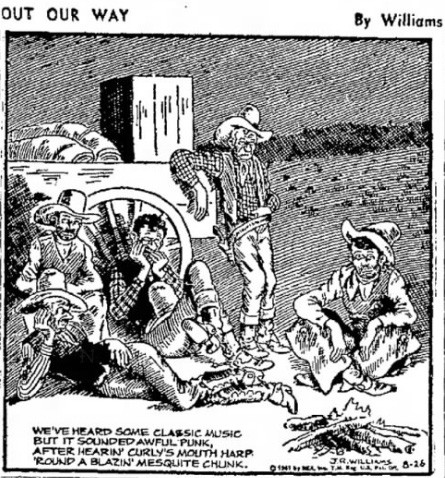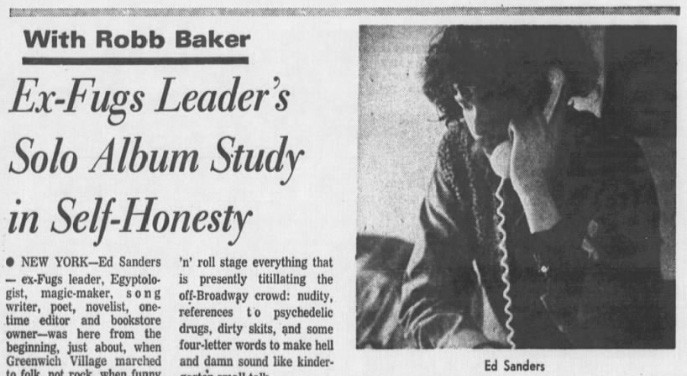As Otto Wise exhaled, one night in the final few months of the nineteenth century, the smoke from his cigar curled towards the ceiling of B’nai B’rith Hall, San Francisco. Wise, a twenty-seven year old attorney, was “director” for that nights’ “smoker” at the fraternal lodge, encouraging attendees to do a turn for the entertainment of the two hundred other guests. After drinks and a light meal, at his insistence, someone sang. Someone else gave a dramatic recitation. The sound of an amateur violinist resonated in the haze. Wise urged another man to dance, to perform a “cakewalk,” he said. The man demurred. Cigars flared, the fug mixing overhead.
Wise turned next to Eugene Levy, a fellow attorney. Levy, who was thirty nine, sang as requested. The report in the next day’s San Francisco Call didn’t note the name of the song. Perhaps it was something then fashionable, or an older hit, from when Levy had danced until midnight with the woman who would be his wife, when he’d dressed smartly and worn his moustache wider than his face. Perhaps it was a frontier song, a relic of the Californian history that he loved. Perhaps it was older still, or a song of his own composition. Perhaps it was none of those.
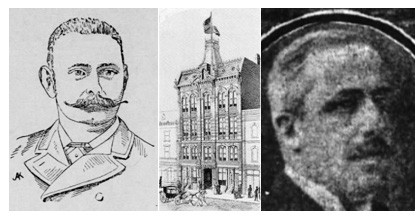
(L-R) Eugene Levy, in 1890; B’nai B’rith Hall, San Francisco; Otto Wise, in 1911 (Sources- San Francisco Call, Jewish News of Northern California, San Francisco Chronicle)
Whatever the song, it was bad. Before Levy could sit down, Wise mocked it. Wise was a consciously cultured man - he gave public lectures on Jewish literature and “the social life of the ghetto” - and this song, he thought, was so bad that it needed a new word, a word that probably hadn’t been used about music before, at least not in print, a noteworthy word, more noteworthy than the song itself. It was, he said that night in October 1899, “the most punk song ever heard in a hall.”

“The most punk song ever heard in a hall,” 1899 (Source: San Francisco Call)
Many punk historians have tried to capture the complexities of the word “punk.” “Ask forty punk rockers how they define punk and you’ll get forty different answers, and they’ll all be right,” Bob Stanley suggested in Yeah Yeah Yeah: The Story of Modern Pop. It is a “notoriously slippery term,” Nicholas Rombes wrote, in A Cultural Dictionary of Punk, “unstable, ambiguous, loaded with so many suggestions.” According to Richard Cabut, in an introduction to Jon Savage’s Punk Etymology, in Cabut and Gallix’s Punk Is Dead: Modernity Killed Every Night, “at the beginning - and at the end – is the word.”
If the story of punk’s etymology is told at all, it is normally told this way: at the very end of the sixties, and the very start of the seventies, the word bubbled up in rock criticism, most notably when Lester Bangs referred to The MC5 and Iggy Pop as “punks.” In 1971, they say, Creem editor Dave Marsh coined the term “punk rock,” in a review of ? And The Mysterians. The next year, the future Patti Smith guitarist Lenny Kaye used the phrase to describe Nuggets, his compilation of mid-sixties garage. By 1976, it was used for the bands who played at Max’s Kansas City and CBGBs, via a New York magazine called Punk. The term re-crossed the Atlantic, and was used to describe London bands. At some point after that, apparently, punk “died.”
Those that mention any older history might suggest that Bangs got the word from William Burroughs – who is sometimes quoted to suggest punk meant “someone who took it up the ass” – or that Shakespeare used the word to mean “prostitute.” Any older musical history of “punk” is lost, with only faint smoke trails lingering, through forgotten journalists in regional newspapers, under-appreciated female critics and rock crit faves, back to Otto Wise and his cigars, and further still, through centuries.
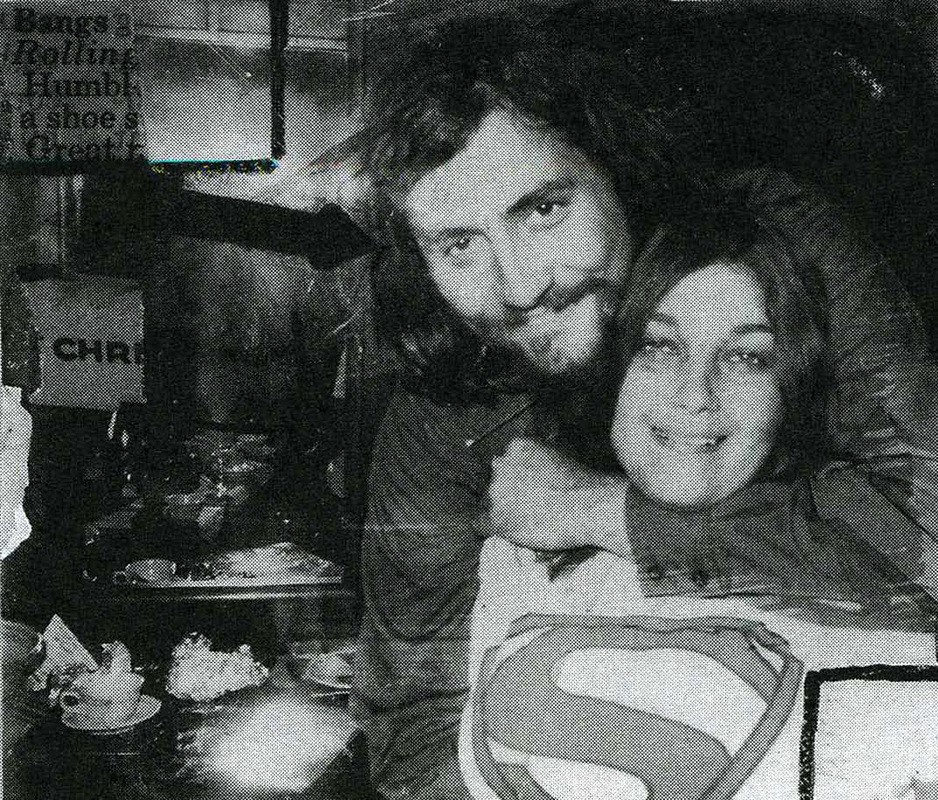
Lester Bangs and Lillian Roxon (Source: Robert Milliken, Lillian Roxon: The Mother of Rock)
Punk was already mean and ironic by the time Shakespeare used it. His punks were flashy and transgressive even at the end of the sixteenth century. “This punk is one of Cupid’s carriers,” he wrote, in The Merry Wives of Windsor around 1597. “She may be a punk;” Lucio says in Measure for Measure, “for many of them are neither maid, widow, nor wife.” In All’s Well That Ends Well, the Clown mentions a “taffeta punk” for whom the “French clown” would be “fit.”
According to the Oxford English Dictionary, punk was first printed in 1575, the year Shakespeare became a teenager. It appeared in a song, a ballad called Simon The Old Kinge, or sometimes Old Simon The King. The song’s narrator suggests that being drunk is “a sin, as it is to keep a punk.” It seems to be a joke, a drinking song disguised as a morality tale, or vice versa. The song was popular, and was reprinted often, becoming a standard for hundreds of years. According to one writer in 1776, it was played drunkenly in taverns, with “half a dozen fiddlers” playing “till themselves and their audience were tired.” Despite its “harsh and discordant tones,” “people thought it fine music.”
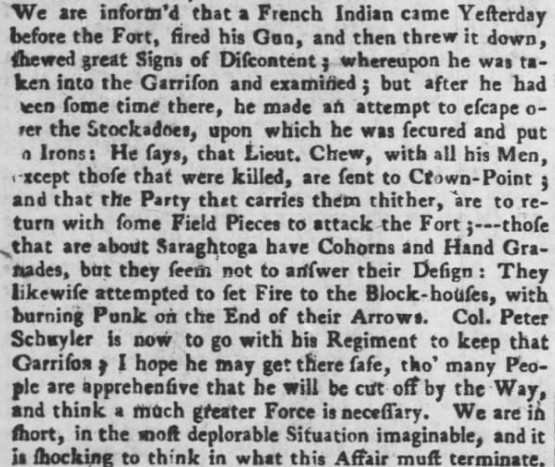
“Burning punk,” mentioned in a 1747 article about an attack on Fort Saratoga (Source: Pennsylvania Gazette)
Meanwhile, on the other side of the Atlantic, a new meaning for punk grew, a meaning that had never been used in Britain: punk as rotting wood, used for tinder, and eventually other things that smoulder, like fuses and incense. This usage probably derived from Native American languages; in Lenape, for example, “punkw” means “ashes,” and “punxe” means “he puts wood on a fire.” By 1648, “punck” meant “gunpowder.” It was used often in journalistic similes: in 1777, Americans in the Revolutionary War were said to “fight like punk,” and things were “as rotten as punk” by the 1800s.
Eventually, the word became a standalone adjective, meaning poor quality, and was applied to the arts: there were “punk shows” in theatres in San Francisco by 1889. Newspapers speculated about the word’s origins. Some said it was art school or college slang, others that it had spread amongst soldiers fighting against Spain, for whom it meant inedible food. Some said it had come from “hoboes,” “passed along thousands of miles of railroad,” or from “our colored brethren,” or noted it was used by young people, complaining about “punk” plays with no “hot stuff in dem.” This seems to be the sense in which Otto Wise used the word in the B’nai B’rith Hall, earning cheap laughs in a well-to-do setting with a youthful, working class word.
Although it was used across America, it seems small-town Kansas was a particular hotbed for early references to “punk” music: there was a “punk orchestra” in Emporia in 1898; a “punky band” paraded down the street in Waverly in 1899, most likely a theatrical group in blackface; Iola had a “punk concert” in 1901, and Hutchinson had a “punk band” in 1902.
By 1901, according to the St Louis Republic, punk was “everyday twentieth century slang.” In 1907, the Los Angeles Times mentioned a campaign for “punk music by union men,” on its front page. In 1908, there was a “punk opera” in Nebraska. “Punk music” was played in New York, by “a man violinist and his wife accompanist,” and in Utah, by a “cross-eyed accordion player.” In 1913, according to the New York Evening Telegram, a woman “an inch deep in make-up and all swathed in violet chiffon veils and chinchilla” sailed across the Atlantic, “strumming on a guitar in the moonlight and humming French songs. Her voice was punk.” At least one vaudeville performer fought a critic over the word’s use. The first cinematic punk appeared in 1916, in Pedro The Punk Poet.
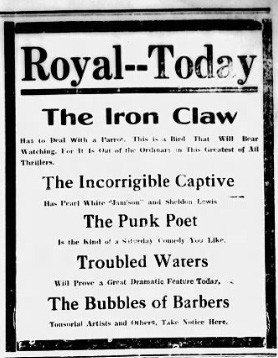
Advertisement for Pedro The Punk Poet, 1916 (Source: Hot Springs New Era)
The word was used so often, it began to sound like a genre in its own right. “It is little wonder that the managers send us punk music shows,” the Pittsburgh Post-Gazette grumbled in 1914. “These draw audiences of great size, while the sane and intelligent exercise of stage art goes unattended.” According to the Tampa Times in 1917, “the latest war song, Send Me Away With A Smile, is very punk and therefore very popular.” “The popularity of a song depends upon its punkness,” the article suggested. “The demand of the day is ‘punk songs for punk people.’”
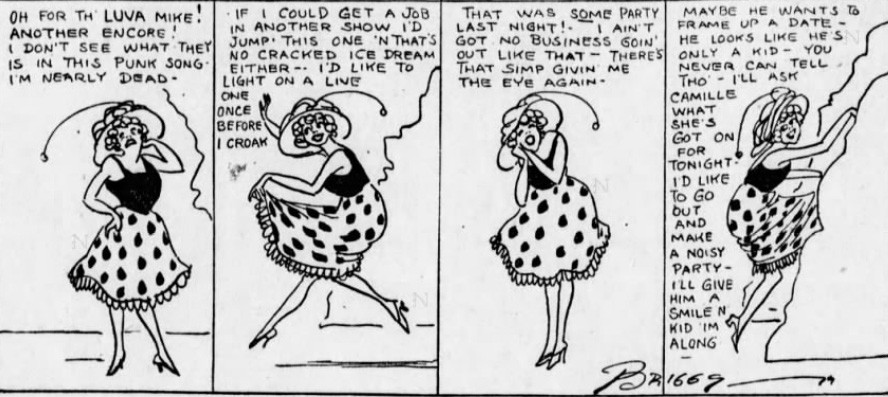
“This punk song…”, ‘Wonder What a Girl in the Chorus Thinks About’, 1919 (Source: The New York Tribune)
Occasionally, with a familiar sense of irony, “punk” became a positive description. In 1929, a critic for the Asheville Citizen-Times described a song called That Empty Pantaloon as “so punk, it is refreshing.” Ten years later, the Pittsburgh Press went further: “Americans wouldn’t be likely to know whether a singer was good or bad and would prefer him fairly punk, because sour notes are the sound of native music that Americans like, such as jazz and swing.” When the story was reprinted elsewhere, some used the heading “We Like It Punk.”
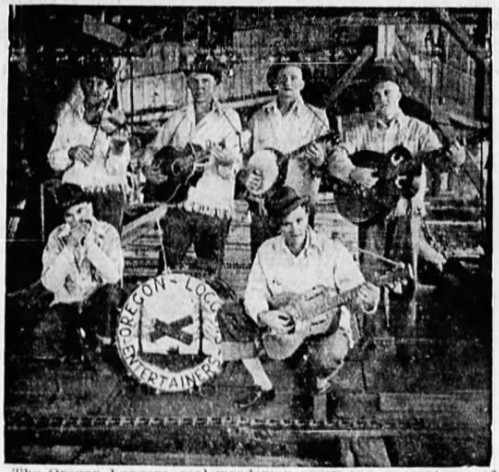
The Oregon Loggers, 1932. Ernest Nelson is bottom left, with his harmonica (Source: The News-Review, Roseburg)
As he put his harmonica to his mouth, and waited for the photograph, Ernest Nelson crouched behind the drum kit. His band’s name was painted on the bass drum: Oregon Loggers, Entertainers. Nelson looked intently at the camera, as his friends posed with their guitars.
Nelson was then twenty-one, and had formed the band a couple of years before, in 1930, with five other part-time lumberjacks. Onstage, the band wore shorts or jeans, high boots, and red hats; their advertisements suggested they were “real backwoodsmen, every one.” They played old-timey music, told jokes and did magic tricks and an axe throwing routine. Their stage names were suitably silly, and nostalgic: there was “Curly The Donkey-Puncher,” and“Rigger Slim,” and “Foxy Grandpa.” Nelson called himself “Whistle Punk,” a logging term for the young, often teenaged, worker responsible for signalling other members of the gang. Sometimes Nelson cut it short, to “Punk.” He was probably the first musician to call himself a punk.
This was not a punk in the Shakespearean sense, nor the poor quality punk of Otto Wise. Through the first couple of decades of the twentieth century, punk had become a term for a young person, often a delinquent, sometimes a young gay man. Inevitably, the word was applied to musicians; writing in his 1939 autobiography, Benny Goodman remembered being called a “little punk” when he was twelve, in about 1920. In Really The Blues, clarinettist Mezz Mezzrow’s 1946 autobiography, “punk” was included in the glossary of jazz slang; Mezzrow said it meant a “young man who plays the feminine role in a homosexual relationship.” “Punks and skunks,” he wrote, could also mean “there’s nothing very exciting to report.”
The “poor quality” sense of the word still lingered. A feature in Ballyhoo magazine in the early thirties asked readers to decide if Bing Crosby and other musical stars were “‘punk,’ ‘lousy’ or ‘marvellous.’” In 1941, a critic in South Carolina wrote about the blues, suggesting there was little future for this music with “these new-fangled, late model, punky songs.”
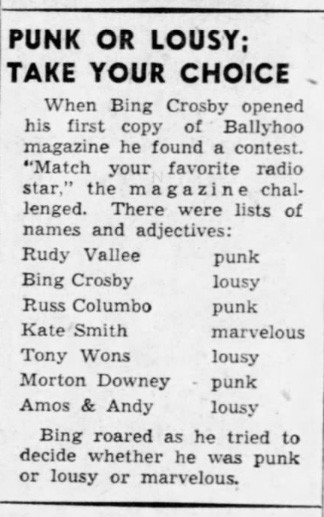
Bing Crosby remembers the Ballyhoo ‘punk’ feature from the early thirties, 1949 (Source: Minneapolis Star Tribune)
By the fifties, the “delinquent” sense of the word became ubiquitous. Newspapers across the country worried about “grisly whodunits, horror films and cinema and airwave glorification of punks.” According to the San Rafael Daily Independent Journal, Elvis Presley was cast as “a hot-headed punk” in Jailhouse Rock. “This punk can’t smile,” a correspondent to the Pittsburgh Press wrote, “he has a nasty curled lip, a mean eye and those sideburns remind me of a hoss-rustler who was hanged a long time ago.” Presley himself used the word; in 1957, he threatened a young Marine with a prop pistol, and called him a “punk.”
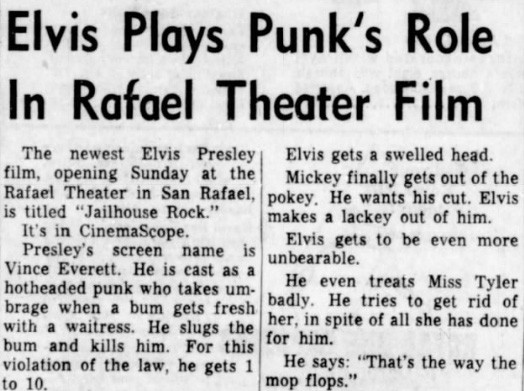
Elvis Presley as a punk, 1957 (Source: San Rafael Daily Independent Journal)
Presley also inspired what was likely the first television reference to “punk” music. It came in 1956, on The Steve Allen Show, the week after Presley made his famous first appearance on The Ed Sullivan Show. In a dig at both Presley and his main television rival, the announcer said there was a “peculiar trend” in music, where “some of the new singing groups look like four fellas you’d hate to meet in a dark alley.” That night, the announcer said, they had “the ultimate in the new trend,” a group called “The Four Punks.” Allen came onstage wearing leathers, with a low slung guitar, swinging his hips, joking about petty crime, before the group performed a song he called ‘Misery Motel.’
By the 1960s, punk was so closely associated with young music fans that, when a seventeen year old “psychedelic painter” was beaten and robbed in Arizona, while hitchhiking from Los Angeles, his assailants cut off his hair and carved “punk” into his back with an empty beer can. Even high-school students in Delaware, campaigning to raise money to renovate the school roof, were called punks: resisting the name, one told his local newspaper that “punk-ness is in the eye of the beholder.”
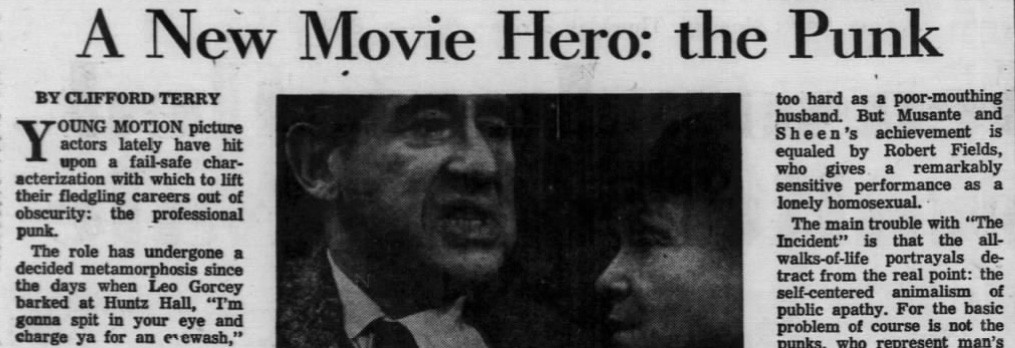
“The professional punk”, 1968 (Source: Chicago Tribune)
Through the sixties “punk” became a journalistic failsafe. Musicians were often dismissed as punks, with The Beatles at the forefront. “They know they’re punks. They admit it,” the Austin American-Statesman argued in 1964. They were “immature punks” in the Uniontown Evening Standard, and “just punks with long hair” in the Fresno Bee. The San Bernardino County Sun complained that “these four little punks’ fad-fed bank accounts have gone to their heads.” Even in the countercultural Berkeley Barb in 1968, they were “punk millionaires.”
Other musicians had the same treatment. In 1965, one news agency ran a story from the Whisky-A-Go-Go, Los Angeles, criticising “punks who can burp into a microphone and produce a hit record.” In 1967, a journalist who had recently returned from Vietnam complained that “we’ve got kids out there dying without a sound and we’ve got punks here who dress up like girls and make millions of dollars doing it.” The same year, Mel Torme called The Rolling Stones “dope-ridden punks.” In 1968, Mike Butterfield told Hit Parader about walking into his first session with Bob Dylan “like a dumb punk with my guitar over my back, no case.”
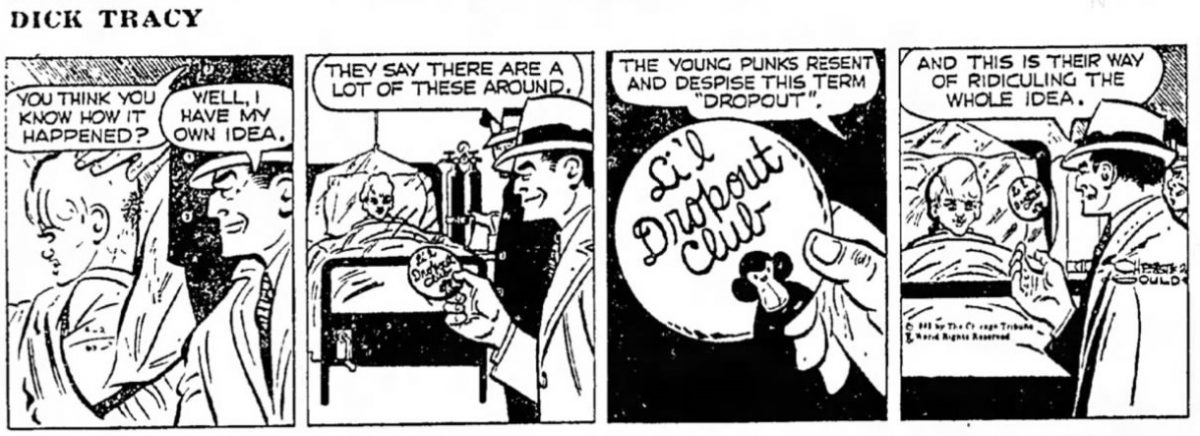
“Young punk” in Dick Tracy, 1965 (Source: Great Bend Tribune)
The word was also used by specialist music journalists, on both sides of the Atlantic. At first, it appeared in reported speech: in 1967, according to Derek Taylor in Disc and Music Echo, “a young artist” in Los Angeles, painting a sign for the Monterey Pop Festival, was told to “get a haircut, punk” by a passing driver. In 1968, in The New Yorker, Ellen Willis reported that staff at the Newport Festival mistook the Village Voice critic for “just another of those young punks.” In Melody Maker, in February 1969, Chris Welch imagined executives at Motown calling him a “Limey punk.”
The old “poor quality” meaning was still occasionally used about music. In 1966, the New York Daily News recalled “there was a middling popular and middling punk song some decades ago called I Surrender, Dear.” In 1967, the Indiana Gazette discussed “a number of the big names who are by any standards of real musical judgement pretty punk performers. Yet these fairly punk performers sell hundreds of thousands of records.” In July 1969, the Indiana underground magazine The Spectator argued that the 5th Dimension’s Don’tcha Hear Me Callin’ To Ya was “so hilariously punk” that it could be a pastiche.
Gradually at first, punk became part of a wider, critical argument, with“punk” musicians in opposition to high art or the mainstream music business. In 1967, in the Indianapolis News, Misha Dichter, a pianist with the Boston Symphony, was said to look “like a cross between a punk and a poet.” In 1968, the Los Angeles Free Press suggested Frank Zappa’s work was an angry response to his a time as a “teenage punk” listening to the bands of the late fifties and early sixties. Writing in New York in December 1968, and published in the Sydney Morning Herald, Lillian Roxon described “Dylan’s switch to rock” as “the beginning of a new golden era when the punks and the scruffies and the weirdos would take over Tin Pan Alley.” A month later, the St Louis Post-Dispatch said Dylan was “half-punk, half-guru, probably America’s best young songwriter, possibly its best young poet.”
The word also crossed over to the music itself. In 1967, Simon & Garfunkel released Punky’s Dilemma, about a Californian draft dodger. The same year, Bonzo Dog Doo Dah Band used the word on Big Shot. In 1968, The Mothers of Invention included Flower Punk on We’re Only In It For The Money: “hey punk,” Zappa sang, to the tune of ‘Hey Joe,’ “where you going with that flower in your hand? Well, I’m going up to Frisco to join a psychedelic band.”
Probably the most widely read reference to “punk” and music in the sixties came in March 1969, on the front page of the Los Angeles Times. Rickey Ivie, a seventeen year old from Fremont, California, was interviewed about a “series of boycotts” that had been organised at his high school. As co-chairman of the Fremont Black Students Union, he railed against the “ghetto educational system” and its “racist training.” “In the world of music,” he said, “we want to hear about black composers, about the Supremes, Ray Charles and Marvin Gaye,” not Bach, “that old, dead punk.”
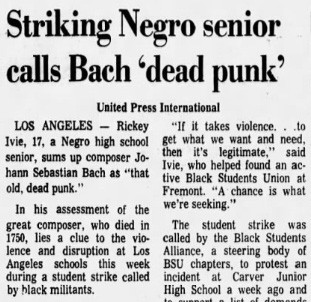
“Dead punk,” 1969 (Source: Arizona Republic)
The Ivie story spread like wildfire, appearing in newspapers across the country. In his Los Angeles Times column, conservative commentator William F. Buckley wrote that “eccentricity is one thing but to call the greatest genius who ever lived an ‘old dead punk,’ the least of whose cantatas will do more to elevate the human spirit than all the black student unions born and unborn, is not so much contemptible as pitiable.” “If Bach is a punk,” he said, “then the human dislocation is total, and nothing at all is worth striving after, not peace, or freedom or good relations between the races.” Buckley’s column was syndicated widely. Headlines suggested that “Everything’s Lost If Bach Is A Punk,” and “Bach’s A Punk? Heaven Help Us.”
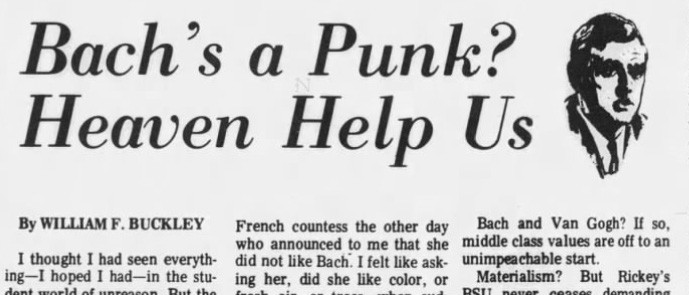
William Buckley’s Los Angeles Times column, as it appeared in The Billings Gazette, Montana, 31st March 1969
Three weeks after the Rickey Ivie story, and the week after Buckley’s column, Lester Bangs’ byline appeared for the first time in a national publication, for his review of The MC5’s debut album in Rolling Stone. He panned the record, saying the band looked like “a bunch of sixteen-year-old punks on a meth power trip.”
Bangs’ description was undoubtedly important. For NME’s Nick Kent, “the whole concept of punk was his.” For Clinton Heylin, in From The Velvets To The Voidoids: The Birth of American Punk Rock, Bangs was “the godfather of punk journalism.” In 1975, Bangs wrote to a friend, admitting that he had “influenced a certain miniscule subculture of teenage misfits with rock’n’roll fanaticism and sometimes literary aspirations, who like to think of themselves as ‘punks.’”
However, in The MC5 review, Bangs didn’t use “punk” to call to mind a new spirit of rock’n’roll, but an old spirit of ill-informed journalistic excess. “About a month ago,” he wrote, “The MC5 received a cover article in Rolling Stone proclaiming them the New Sensation, a group to break all barriers, kick out all jams, ‘total energy thing,’ etc. etc. etc.” The Rolling Stone hype irritated him, and he paraphrased the earlier article, dismissing it with what would become his trademark sarcasm: “never mind that they came on like a bunch of sixteen-year-old punks on a meth power trip – these boys, so the line ran, could play their guitars like John Coltrane and Pharoah Sanders played sax!”
The word also seemed to conjure up Bangs’ own life. He was still then working on an autobiographical novel that he had begun in his teens, which he called Drug Punk. He spent his time reading magazines - Hit Parader, Berkeley Barb – and admired what he called the “Harlem street corner jargon” of Mezz Mezzrow’s Really The Blues. He discussed passages from Hunter S. Thompson’s Hells Angels, which had used the word “punk” frequently, with the San Diego Hells Angels chapter who lived next door. His friend Robert Houghton remembered that We’re Only In It For The Money, with Flower Punk, was one of their favourite records of 1968. “One moment he’s lolling about, getting high, working on Drunk Punk, and taking college classes,” Houghton recalled, “the next moment he’s a published journalist.”
After that MC5 review, through 1970, “punk” became popular, critics said Jim Morrison had a “street punk-choir boy voice,” or that The Rolling Stones had “a punk craftiness and sneering narcissism.” In the Fort Lauderdale News, there was the “lowest point in bad taste: the rock band of young punks at a remodelled nightclub which hung a placard on the bass drum with a phrase containing a four-letter word.” There are two types of kids: good kids and punks,” the Detroit Free Press suggested, though now “the good kids and the punk kids all have long hair.” In July 1970, in Fusion, Nick Tosches wrote a cover story called ‘The Punk Muse.’ For perhaps the first time, “punk” became more than a throwaway reference. It was now a recognisable, fashionable style.

“The Punk Muse”, 1970 (Source: Fusion/The Independent)
At the end of 1970, Bangs wrote a long essay called ‘ Of Pop and Pies and Fun: A Program For Mass Liberation In The Form Of A Stooges Review. Or, Who’s The Fool?,’ Bangs called Iggy Pop “that Stooge punk.” As with The MC5 review, the description was both influential and called to mind earlier journalism; the previous year, in the Los Angeles Times, John Mendelsohn had described The Stooges’ first album as a collection of “whiny adolescently repulsive and barely distinguishable street-punk anthems.” Before that, in Fusion in October 1969, Iggy himself had described some of his audience as “punks.”
Bangs’ “Stooge punk” was a little different to the other “punks” of the time. This punk was “a pre-eminently American kid,” he wrote, vulnerable even, someone the “smug post-hippie audience” thought was “a fucked-up punk.” This was personal for Bangs: “his lifestyle was nigh-identical to ours,” he wrote later. In the issue of Creem that carried the second half of his Stooges essay, Bangs signed another review “Punko Bangs.” A few months later, he wrote that he felt “like some self-important punk’s notion of God sitting up here arbitrating the efforts of bands.” The same year, he called himself a “pompous punk,” someone with “pube punk fantasies.” For the first time in a couple of generations, someone had taken on the word willingly.
By the end of 1970, in New York, Suicide were advertising their early gigs as “punk music,” apparently inspired by Bangs. “I got the word from Lester’s piece,” Alan Vega remembered, “never imagining that punk would become a style of music.”
Punk was fashionable again.

Advertisement for Suicide in the Village Voice, October 1970 (Source: From The Archives)
“If punk America is dying behind the curdled MSG-free dregs of Hip and all the corny Experiments in New Designs for Living,” Bangs wrote in 1971, “then THE LESSON OF ‘WILD THING’ WAS LOST ON ALL YOU STUPID FUCKERS.” Punk seemed to suggest a wider malaise that could be delineated by rock music. This “punk America” caused him to turn to nostalgic rock’n’roll: “you can talk about yer MC5 and yer Stooges,” he said, but they couldn’t compare to the “sneering punk snarl” of The Troggs.
This nostalgic usage was already common, particularly about fifties rock’n’roll. Ellen Willis had called Elvis a punk in 1969, and The Everly Brothers, Gene Vincent, Jerry Lee Lewis and Eddie Cochran would all be punks over the next few years. They were seen as forefathers: in a 1970 article on violence in rock, Rob Partridge in Record Mirror drew the links between the “romantic” punks of the 1950s and The MC5.
However, as Bangs had hinted at, it was the punks of the 1960s who first coalesced into a genre. In March 1971, in Creem, Greg Shaw wrote about The Shadows of Knight’s “hard-edge punk sound.” In April, in Rolling Stone, he praised The Guess Who’s “good, not too imaginative, punk rock and roll.” The next month, Dave Marsh wrote his famous review of ? & The Mysterians, calling them a “a landmark exposition of punk rock.”
Both Marsh and Shaw felt they had originated the phrase “punk rock.” At the end of 1971, Shaw wrote about “what I have chosen to call ‘punk rock’ bands — white teenage hard rock of ’64–66,” and, according to the New York Daily News in 1976, he was “willing to take the credit for it even though he says he can’t remember the first time he used it.” Marsh remembered that, “culturally perverse from birth, I decided that this insult would be better construed as a compliment.” He was, he said, “happier every year” to receive the credit for “punk rock.”
However, despite their influence, neither Shaw nor Marsh was the first to use the phrase. A year before either of them, in March 1970 in the Chicago Tribune, Ed Sanders, formerly of The Fugs, described his first solo album as “punk rock – redneck sentimentality – my own past updated to present day reality.” (While working on the album in December 1969, he also recorded a song called I’m Just a Tired, Lonesome Street Punk, or simply ‘Street Punk,’ which was only released in 2008.) “No one sent me a check for coming up with the term,” Sanders recalled.
Wherever it originated, this “quaint fanzine term,” as Shaw thought of it, was growing in importance. Bangs’ Psychotic Reaction and Carburetor Dung: A Tale of These Times was published in Creem the month after Marsh’s Mysterians review, again praising mid-sixties punk rock, particularly The Count Five. “Oh, it was beautiful, it was pure folklore, Old America,” Bangs wrote. He planned to use the article’s title for what the Detroit Free Press anticipated would “probably be the definitive book on punk rock,” though it was never published. (The title was later used for the first collection of Bangs’ journalism.) According to Robert Christgau in Village Voice in October 1971, “there are cliques that support various of rock and roll’s historical periods (rhythm and blues, mid-’60s punk) and put out mimeographed journals like a bunch of Trotskyites.”
Both the word and the music spread further still when Lenny Kaye used the phrase in the liner notes to his 1972 Nuggets compilation of sixties garage rock . “The New Nostalgia is here,” proclaimed a Chicago Tribune review, “with an emphasis on a single genre: punk-rock.” “I never thought I’d see the day when anybody’d take this music seriously,” Greg Shaw wrote in his own Rolling Stone review. Bangs wrote that Nuggets “proves that psychedelia and punk zap are just as much a real cool time now as they were when we might have invested some emotional space-born significance in them.” In some quarters, as Jon Savage put it in England’s Dreaming, Nuggets “initiated a full-blown cult.” By the new year, some fans of Nuggets were calling themselves “punks.”
Before long, punk was used to describe contemporary music. “Punk-rock has become the favoured term of endearment,” Ellen Willis wrote in December 1972, for “the mythic crudity and crassness reputed to be at the heart of rock and roll.” Willis particularly liked what she called the “neo-punk sensibility” of Five Dollar Shoes, who she saw at the Mercer Arts Center in 1972, in one of the earliest references to underground New York rock as punk. (Lynn Van Matre had called Moogy And The Rhythm Kings “New York punk rock” in the Chicago Tribune that summer. Lillian Roxon also frequently praised a band called Street Punk, regulars at Max’s Kansas City.)
Although it was often used for artists that are now thought of as punk’s forebears – Lou Reed, The New York Dolls, Flamin’ Groovies – the word refused to be pinned down in the first half of the seventies, such was its ubiquity. Punk was used for a kind of “back to basics” blues rock (Black Oak Arkansas, Fleetwood Mac, Bob Seger, Grand Funk Railroad, Edgar Winter, Status Quo), heavy metal (Black Sabbath, Blue Oyster Cult, AC/DC), progressive rock (Family, Peter Gabriel, Pavlov’s Dog), and dozens of pop and rock acts with little else in common (Aerosmith, Bruce Springsteen, Dr Feelgood, Jefferson Airship, Ashton, Gardner and Dyke, Frijid Pink, Mott The Hoople, Hall and Oates, David Essex, Big Star, Yoko Ono, Suzi Quatro, 10cc, Showaddywaddy, Mud, The Rubettes, Manhattan Transfer). The Monkees were “what punk rock is all about.” “Dion was the original punk,” according to Greg Shaw in Rolling Stone. For the Philadelphia Daily News, Connie Francis’ Lipstick on My Collar “epitomized the adolescent worst of punk rock.”
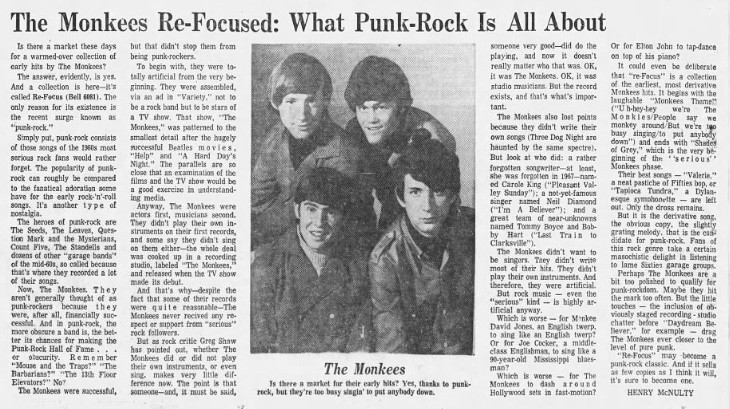
“What Punk Rock Is All About”, 1973 (Source: Hartford Courant)
Soon, bands began to adopt the term. The Who included The Punk and The Godfather on Quadrophenia in 1972. As well as Street Punk in New York, a band called The Punks formed in 1973 in Detroit. “Patrician rock is going down now,” Don McLean said that year, trying to shake off the success of American Pie, “I like punk rock.” Brownsville Station released School Punks in 1974 and told journalists that they were “punk rock.” In 1975, Lowell George of Little Feat, once of The Standells and The Mothers of Invention, claimed that his current group, five albums in, were “just another punk band from L.A.” That year, The Tubes released ‘White Punks on Dope,’ reportedly about Jefferson Starship.
For much of the seventies, punk was often interchangeable with glam rock. For the New York Daily News, “punk rock” was a “subdivision” of “glitter rock” or “drag-rock.” Marc Bolan, David Bowie, Slade, and The Sweet were all called punk, and Roxy Music were “punk rock in space.” According to the Los Angeles Times in 1975, hitmakers Chinn and Chapman were “the masters of the English punk-rock sound,” but were “tired of the punk-rock wave that they rode to success in England.” In the British music weeklies, as Simon Reynolds observed in Shock and Awe: Glam Rock and Its Legacy, from the Seventies to the Twenty-First Century, groups such as The Sensational Alex Harvey Band and Heavy Metal Kids were “punk before punk.” One headline about Harvey suggested “Thou Shalt Have No Other Punk Before Me.”

The Sweet and Chinn-Chapman as punk, 1975 (Source: Los Angeles Times)
Indeed, the word was used frequently in the British press. As early as 1972, Charles Shaar Murray had described The MC5 as “punks,” after quoting Lester Bangs’ Rolling Stone review. Mick Farren often used the word for 1950s rock’n’roll, or those influenced by it. By 1973, NME was writing about “rock ’n’ roll’s punk-junk revolution.” In 1974, Melody Maker discussed “these brash new Manhattan bands and their shameless punk rock,” and NME reported that record companies were actively searching for “punk.”
More than anyone else, Alice Cooper was the most high profile punk of the early seventies. He was “archetypal punk rock” for Grace Lichtenstein in The New York Times, and “mainstream punk raunch” in Rolling Stone. Punk was “a style that began and should have ended with Alice Cooper,” the Tampa Times argued. In Creem, Cooper won the new “Punk of the Year” category in the 1972 Readers’ Poll, with Lester Bangs placed in sixth. The next year, Billion Dollar Babies was “the Sgt. Pepper of punkdom.” After seeing a disappointing Alice Cooper show, a critic in Ontario wrote, probably for the first time, “punk rock is dead!”
Despite its popularity, punk still often betrayed the attitudes of those who used it, riddled with the problems of its etymology. In 1970, Huey P. Newton wrote to members of the Black Panthers, in a letter widely republished in the underground press, urging them to see the “women’s liberation” and “gay liberation” movements as allies, and that “the terms ‘faggot’ and ‘punk’ should be deleted from our vocabulary.” Even where the word had come to mean a delinquent, it still sometimes echoed with homophobia or misogyny; liner notes to a 1973 compilation of The Sonics suggested that “it’s like if delta blues oughta be played by old black men, and if fag rock oughta be played by real queers, then it stands to reason that punk-rock oughta be played by punks!” For Ellen Willis, in 1974, “nouveau punkism… became an excuse for blatant male chauvinism and nihilistic trashing of every value and aspiration beyond (male) orgams and (male) violence.” In 1975, Let It Rock noted that “the term punk is bandied about an awful lot these days, it seems to describe any rock performer who camps it up to any degree, on or off stage.”
Lester Bangs became sceptical about the term. In 1975, he wrote that “I try to completely dissociate myself” from people who think of themselves as “punks,” “because I don’t want to be the king of the punks or the king of the rock critics or any other such thing.” “This is punk?” he asked, when his friend Billy Altman took him to CBGBs for the first time, to see Talking Heads and Television. “This is just San Francisco all over again.”
“When there are no more punks,” Sid Vicious said, in January 1978, on the day of The Sex Pistols’ final concert, “that is when things are going to be okay.” The word had dogged the band, through tabloid controversy and critical admiration.
In America, the word had been attached to something recognisable as modern punk since at least Trixie A. Balm’s June 1975 review of The Dictators’ debut album in Creem, in which she praised their “punk aplomb” and “vinylized punk menace.” At first, calling The Sex Pistols “punk” was not to suggest they were new, but to compare them them to prevailing rock critical trends; in their first major review, in NME in February 1976, Neil Spencer said they played “60’s styled white punk rock as unselfconsciously as it’s possible to play it these days i.e. self-consciously. Punks? Springsteen Bruce and the rest of ’em would get shredded if they went up against these boys.” In May that year, Time Out described their set as “a mixture of Anglo-American teen/punk classics.” For Paul Morley, in his Out There fanzine, it was “controlled chaotic punk muzak.” Even for Greg Shaw, reviewing a gig at the 100 Club, “their sound is a straight blast of tortured punk rock.”
Even as the word became something new, it retained its nostalgic connotations. In an important story for Melody Maker in August 1976, Caroline Coon outlined a “movement” of “third-generation punks.” “As ‘punk rock’ has been increasingly used to categorise the livid, exciting energy of bands like the Sex Pistols, there has been an attempt to redefine the term,” she wrote. It was still a word with roots. “The punk is one of the oldest and most honoured figures in rock’n’roll,” the Washington Post argued beneath a headline heralding “The Time-Honored Punk Syndrome.” A long feature by Ernest Leogrande in the New York Daily News suggested that “time was when punk was a rotten word. Being a punk stunk. It still is no high-class label but the idea of the punk has entered the world of faddism.” “If there is such a thing as punk rock — and most insiders consider it a term invented by the press – it’s basic rock and roll music,” Lisa Robinson wrote. Greg Shaw suggested this was “the punk-rock revival.”
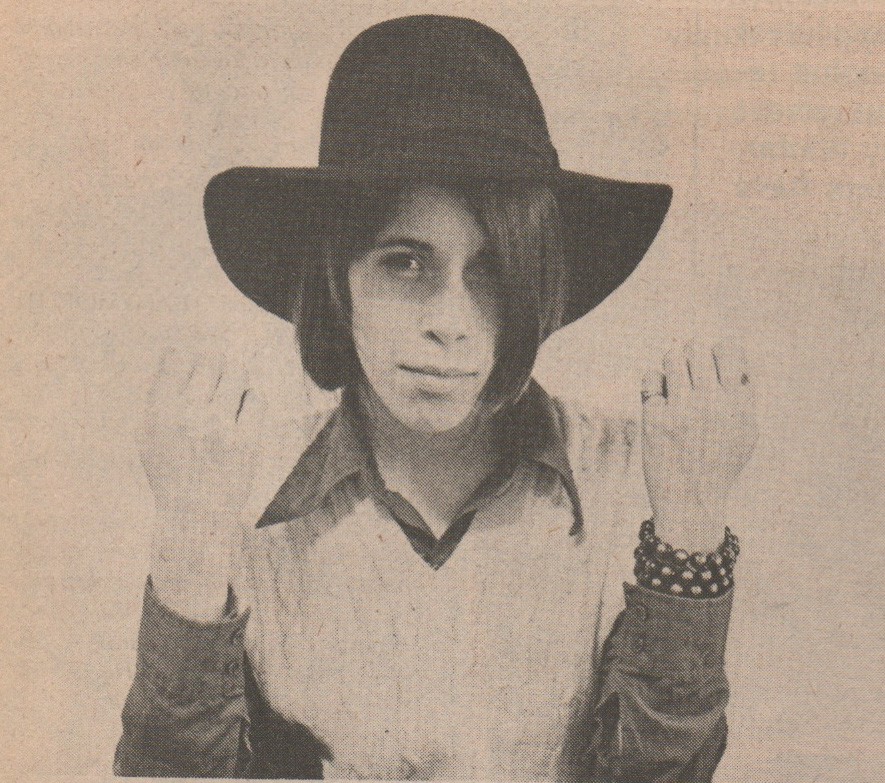
The Sweet and Chinn-Chapman as punk, 1975 (Source: Los Angeles Times)
Some of this “revival” was due to Punk magazine, which was launched in the first week of 1976 by John Holmstrom, Legs McNeil and Ged Dunn. “That is what put the p-word on the map,” Holmstrom remembered. “Since I was a big punk rock fan, I figured the name would help make it a successful music magazine,” he said. Although he knew that “punk was a dirty word at the time,” “it was no big accomplishment to name a magazine after that particular four-letter word. Punk rock was a term that had been used to describe rock’n’roll for years, and Creem was doing a great job of it.” (Billy Altman had also had a short-lived fanzine called Punk in 1973.) “The word was being used to describe Springsteen, Patti Smith, and the Bay City Rollers,” he said, “so when Legs came up with it we figured we’d take the name before anyone else claimed it.”
For his part, McNeil saw the choice of word as important. “The word ‘punk’ seemed to sum up the thread that connected everything we liked – drunk, obnoxious, smart but not pretentious, absurd, funny, ironic, and things that appealed to the darker side,” he recalled in Please Kill Me: The Uncensored Oral History of Punk Rock, which he wrote with Gillian McCain. “It was what your teachers would call you,” he told Jon Savage for England’s Dreaming. “It meant you were the lowest, that you’d never get anywhere. It also meant a complete failure.” “Lester had used the term, but I didn’t even read Creem,” he remembered later, “No one called anything ‘punk’ because of Dave Marsh, no one used the word until we, until I, named Punk magazine.”
It still wasn’t a word that many were comfortable with. “John Rotten half-seriously favours ‘anarchy rock,’” Jonh Ingham wrote in Sounds in October 1976. For Ingham, who preferred the phrase “? Rock,” the term “punk rock” was “historically inaccurate. Punk rock as a genre in the mid-sixties… has no relation with the viciously original music of The Sex Pistols or The Clash or The Damned.”
In NME, The Clash’s Mick Jones said his music “ain’t punk and it ain’t New Wave. Call it what you want; all the terms stink. Just call it rock’n’roll.” Both Tommy Ramone and Handsome Dick Manitoba of The Dictators were quoted disavowing the term in the Ernest Leogrande Daily News feature. Despite all the attempts to “give the word ‘punk’ a good name,” he wrote, there were fears that the media “will debase the word punk as they did the word hippie. And that would make punk a rotten word again.” New York Rocker complained that the “allusions to inexperienced or callow youth,” “passive homosexuality, whores and Chinese incense” missed the point. In jail, Wayne Kramer of The MC5 flushed Billboard articles about The Ramones down the toilet, worried about the word punk. “That kind of talk could get you killed, right?” he recalled.
“The Punks - Rotten and Proud of It!” ran the headline in the Evening Standard, after the The Sex Pistols appeared on Bill Grundy’s television show, in December 1976. Punk was on the front pages again. “Punk rock, which exploded onto the screen last night in a string of four-letter words, is a bizarre movement which combines rock and rebellion,” the article suggested, before outlining the meaning the journalist had found in Partridge’s Dictionary of Slang and Unconventional English: “Punk - worthless, decidedly inferior, displeasing, rotten.”
Punk was freshly ubiquitous. “In a matter of just a few months,” Greg Shaw wrote in 1977, “‘punk’ has become the most overused word in the pop vocabulary.” That year, Jon Savage called it “punk saturation.” In the New York Times, suggesting that “punk is sweeping the country,” William Safire traced the word’s history, from “hobo lingo” to “catamites” to “young hoodlums.”
The word’s renewed popularity confused some of the older critics. Dave Marsh, writing in 1977, noted that punk “runs through American folklore,” but the word “no longer describes style, much less music.” Both Ellen Willis and Lester Bangs wrote about the feeling of “déjà vu” with punk. The Sex Pistols reminded Willis of Mott the Hoople. For Bangs, punk was long since “dead and buried.”
Bangs continued to struggle with the word, variously clinging to it and casting it off. In 1977, 1978 and 1979, he wrote three separate essays titled Everybody’s Search for Roots (The Roots of Punk). “The mere existence of articles like this means that punk is dead and gone,” he wrote. “Punk is ripping up articles like this one. Punk is lacking the energy or interest to bother ripping them up. Punk is reading this article mechanically because there’s nothing else to do and the world glides by like cinders.” “I’m not a punk and never was,” he claimed. However, in 1980, he described himself as “yet another pompous blowhard” who “purports to possess the true meaning of punk rock.” “I invented punk,” he wrote in 1981, “everybody knows that,” before tracing its history through Greg Shaw and Dave Marsh, through Iggy Pop and Lou Reed, to “a toothless hag who once turned tricks,” and a drunk who once “burbled out the age-old and Grail-priceless Secret of Punk to another alkie with a better memory.” In 1982, in the last article published in his lifetime, printed just days before he died, he wrote that “every song on The Exploited’s Punks Not Dead is an anthem.”
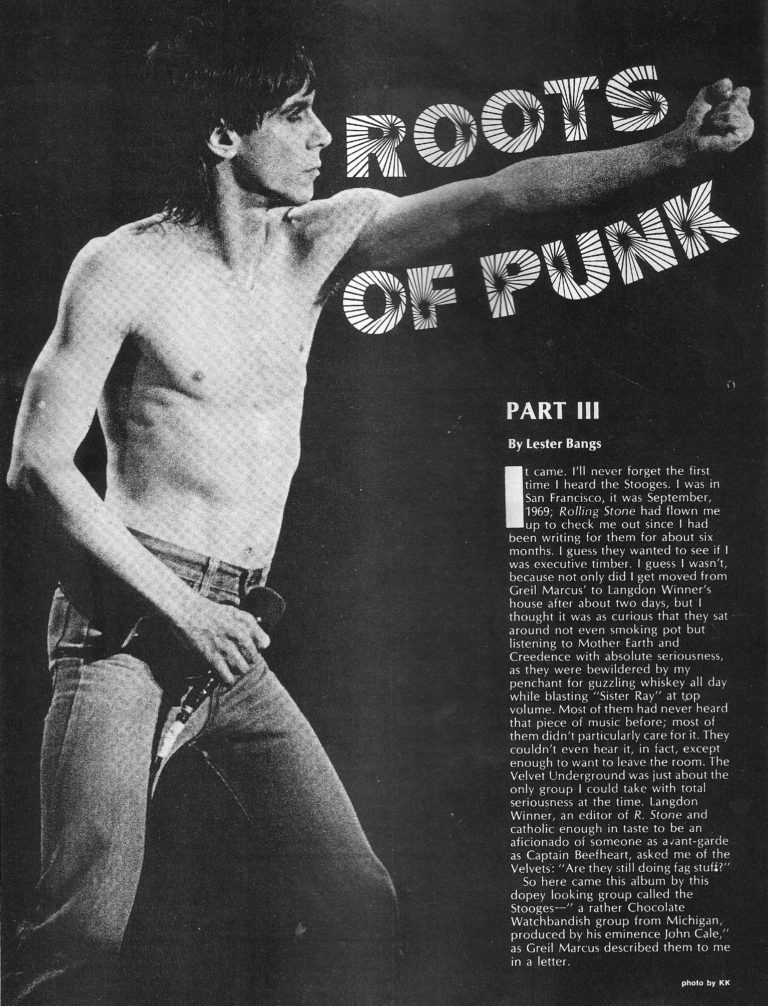
The Roots of Punk, Part III, New Wave Rock magazine, 1979 (Source: Keep It Dirty)
Otto Wise was long dead then, of course, the influenza pandemic catching him young and rich in 1919. The B’nai B’rith Hall, a dozen or so blocks from Winterland, where The Sex Pistols had played their last show, had been destroyed in the 1909 San Francisco earthquake. Sid Vicious was dead too.
Ernest “Whistle Punk” Nelson had moved to San Francisco in the mid-thirties, after splitting from The Oregon Loggers. He staged a brief solo return in the early forties, but never quite made it in music. During the war, he worked in the shipyards and then, for twenty eight years, in a saw works. He got married, to Astrid, and outlived her. In 1974, when he was sixty three, he moved to Twain Harte, California, a small town in the mountains, where the clouds dip behind trees at sunset, their edges obscured by forest.
Punk came and went, and came and went. Nelson may have noticed, or may have not. He was clearly proud of his musical days. When he died, in 2003, at the age of 91, his obituary emphasised that he was a member of “The Oregon Loggers Band during the Great Depression.”
Unseen by most in the music press, in 1976 and 1977, British folk musicians revived Old Simon The King. “Punk,” they sang in still smoky pubs. “Drink will make a man drunk,” they sang, with a raucous, historical sense of fun, “drunk will make a man dry; dry will make a man sick, sick will make a man die.” “Punk,” they sang, teaching the old song to their friends, talking about the new music they had heard. “Drinking will make a man quaff, quaffing will make a man sing, singing will make a man laugh, and laughing long life doth bring.”
Would you like to support Flashbak?
Please consider making a donation to our site. We don't want to rely on ads to bring you the best of visual culture. You can also support us by signing up to our Mailing List. And you can also follow us on Facebook, Instagram and Twitter. For great art and culture delivered to your door, visit our shop.


